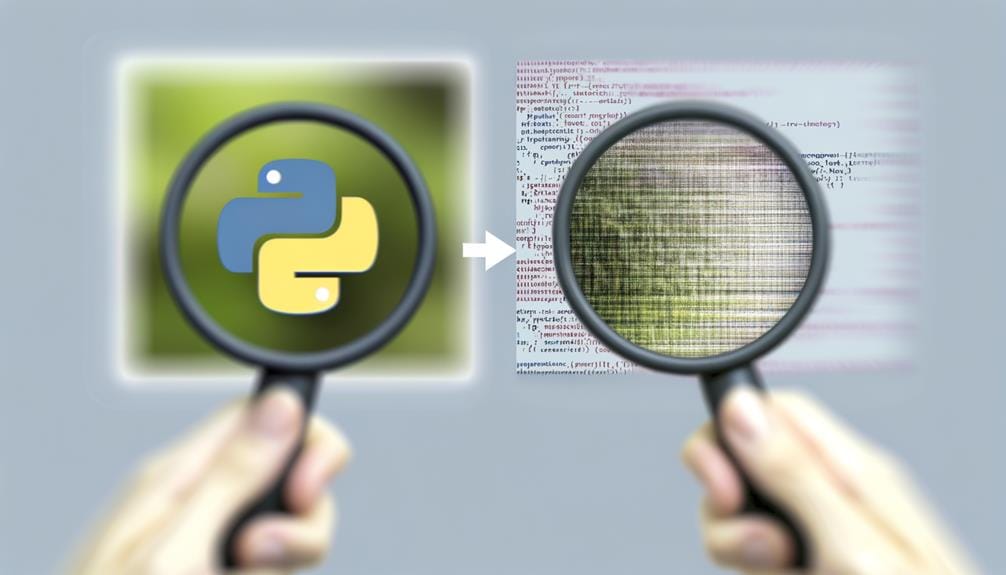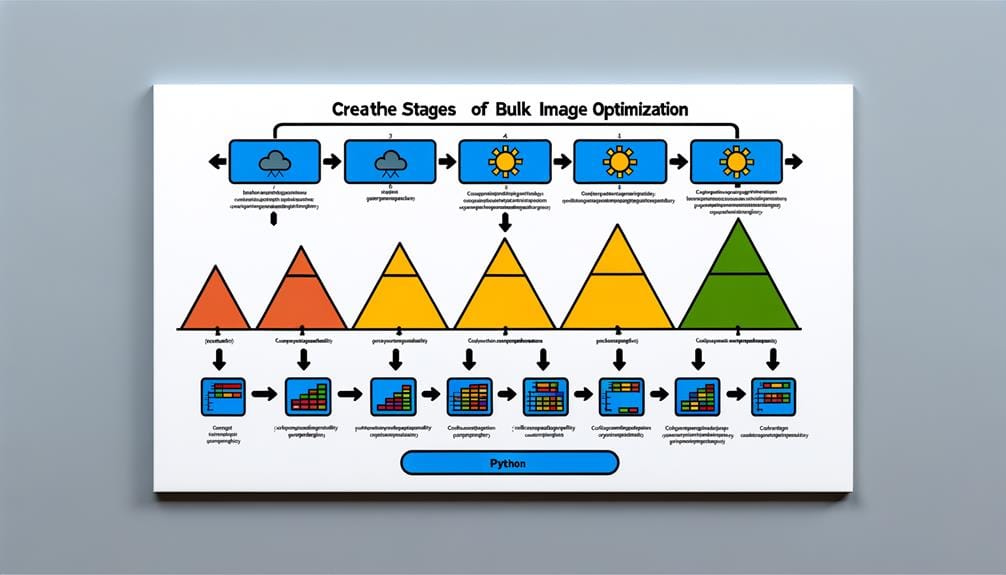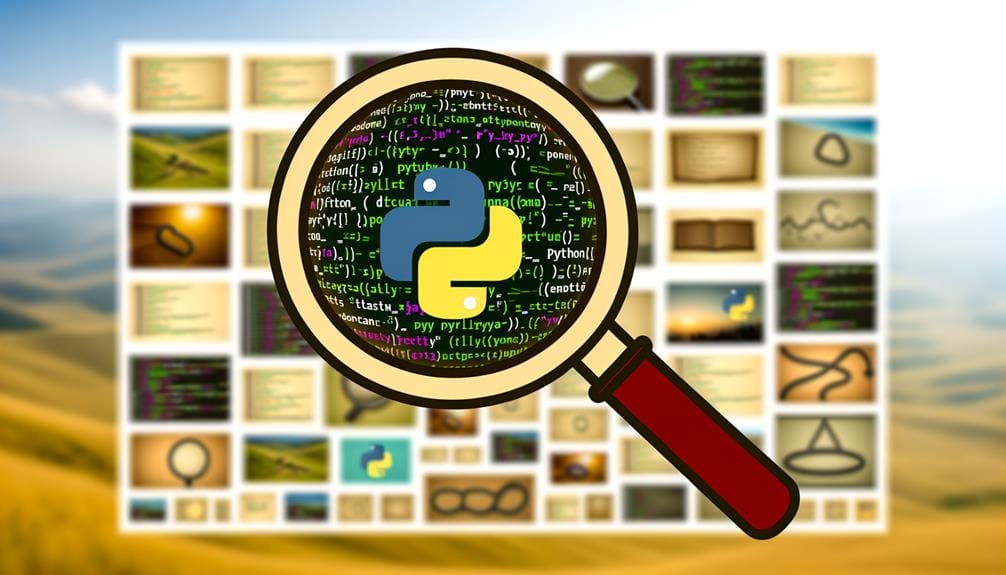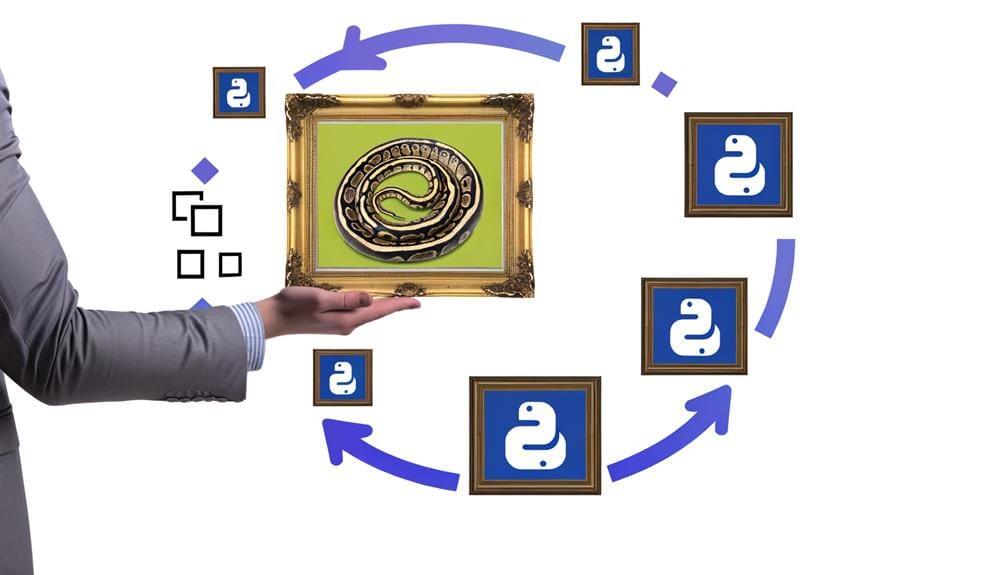We're exploring image optimization in Python at scale, providing an in-depth guide. Python libraries like Pillow, Scikit-image, and Pyguetzli are instrumental in this process, allowing for advanced and bulk image optimization that significantly boosts SEO. By strategically leveraging these tools, we can enhance web performance, balancing visual quality with file sizes. This results in rapid loading times, lower bounce rates, and an overall improved user experience. After mastering these techniques, you'll be primed to delve into alt text practices, responsive images, automated resizing, and more. So, why wait? There's a whole world of Python-driven optimization to discover.
Key Takeaways
- Python libraries such as Pillow, Pyguetzli, and Scikit-image offer various image optimization methods for bulk processing, improving web performance.
- Bulk image optimization techniques in Python can significantly reduce file size without compromising visual perception, streamlining workflow.
- Tools like Pyguetzli leverage Google's Guetzli for high-quality JPEG optimization, ensuring superior visual content even in bulk optimization.
- Implementing image optimization strategies in Python not only enhances website performance but also improves user experience, contributing to SEO benefits.
- Optimized images lead to faster loading times, lower bounce rates, and higher user engagement, providing dual benefits for user experience and SEO performance.
Python Libraries for Image Optimization
Diving into the realm of image optimization with Python, we encounter a variety of powerful libraries such as Pillow, img4web, Tinify, Pyguetzli, and Scikit-image, each offering unique capabilities for enhancing and optimizing visual content. We've got Pillow, a go-to for most developers, offering a range of image compression methods, including resampling and quality adjustments. Next, there's img4web, a player that adheres to Yahoo's best practices for speeding up websites. Tinify, another useful tool, provides an API for TinyPNG or TinyJPG members. Pyguetzli, a library leveraging Google's Guetzli for JPEG optimization, offers remarkable visual quality adjustments. Lastly, Scikit-image allows advanced image optimization through pixel deletion, proving to be an invaluable asset in our toolkit.
Optimizing Images With Python

While we've got an impressive arsenal of Python libraries at our disposal, it's crucial to understand how to harness their power to optimize images effectively. Pillow, for instance, offers several image compression methods, allowing us to reduce file sizes without compromising visual quality. We can adjust the quality parameter to find a balance between file size and visual fidelity. Pyguetzli, on the other hand, utilizes Google's Guetzli for efficient JPEG optimization, allowing for superior visual quality adjustments. And let's not forget Scikit-image, perfect for advanced image optimization via pixel manipulation. Navigating these libraries strategically, we can optimize images in a way that enhances web performance, ultimately improving SEO and user experience.
Bulk Image Optimization Techniques

In the realm of image optimization, employing techniques for bulk processing not only streamlines our workflow, but also significantly reduces the overall file size, thereby improving web performance. Different image compression methods can be utilized in Python libraries, such as Pillow and Pyguetzli, for efficient bulk optimization. We can decrease image quality by a certain percentage for optimization, or resize images while optimizing for web usage and visual quality. Through careful quality adjustments, we achieve the delicate balance between visual perception and file size. Moreover, the Pyguetzli library offers unique bulk optimization with different quality settings. By exploring these techniques, we can efficiently optimize images in bulk, maintain visual quality, and enhance web performance.
Strategies for Image Optimization

As we venture deeper into the realm of image optimization, it's crucial to outline strategic methods that not only enhance visual quality but also boost page speed and SEO benefits using Python libraries like Scikit-image, Pyguetzli, and Pillow.
- Bulk image compression: We leverage Python's Pillow library for batch processing images, reducing file size substantially without compromising on visual quality. This also improves page load speed, a key SEO factor.
- Fine-tuning image quality: Using Scikit-image, we manipulate pixel density and image resolution, refining the balance between image quality and file size.
- Visual content optimization: Pyguetzli's powerful JPEG optimization capabilities ensure high-quality visual content, while keeping compression ratios in check.
These strategies, when implemented correctly, can significantly improve your website's performance and user experience.
Image Optimization and SEO Benefits

Harnessing the power of Python libraries, we can significantly improve our SEO performance through strategic image optimization. In this tech-driven era, visual optimization is imperative for enhancing user experience, and Python libraries like Pillow and Pyguetzli make it achievable.
Optimized images mean faster loading times, which directly contributes to lower bounce rates and higher user engagement. Such improvements in website performance are SEO benefits that cannot be ignored.
Moreover, Python's scalability allows us to process images in bulk, saving valuable time and resources. By employing image optimization strategies, we're not just improving visual appeal, but also making significant strides in our SEO efforts. Thus, Python-driven image optimization is a strategy that offers dual benefits: improved user experience and enhanced SEO performance.
Alt Text and Responsive Images Practices

Optimizing alt text and implementing responsive images are key practices that we've leveraged to further enhance our image optimization strategy, contributing significantly to both user experience and SEO performance. We've found that effective alt text boosts web accessibility, while responsive images improve image rendering on various devices.
- We utilize advanced image compression methods to reduce file size without compromising usability. This helps in quicker page loads and a smoother user experience.
- Alt text is carefully crafted to describe images accurately, aiding visually impaired users and enhancing SEO.
- Responsive images are implemented to ensure clear image rendering across diverse screen sizes.
Automated Image Resizing Techniques

Diving into automated image resizing techniques, we leverage Python libraries to streamline this process, significantly reducing manual effort while maintaining high-quality visuals. We apply image resizing automation to optimize visuals for various platforms, using libraries like Pillow and Scikit-Image. These tools allow us to manipulate image dimensions, ensuring visuals are perfectly suited for their intended use, leading to scalable image optimization.
Furthermore, these libraries offer bulk processing capabilities, enabling us to handle vast image datasets efficiently. This scalability is crucial in today's data-driven world, where managing large image databases is commonplace. Yet, it's not just about resizing – maintaining image quality is equally critical. We strike a perfect balance, resizing without compromising visual integrity, ensuring our visuals remain sharp and engaging in every context.
Best Practices for Image SEO

Navigating the realm of image SEO, we recognize the importance of adhering to best practices, which not only enhance website visibility but also significantly improve the user experience. To begin with, image compression techniques are fundamental. Leveraging efficient algorithms, we can reduce file size without compromising quality.
- Use suitable formats: JPEG for complex images and PNG for simpler or transparent ones.
- Implement effective image compression techniques: Python libraries like Pillow or Pyguetzli are excellent tools.
- Focus on visual content optimization: Alt texts, descriptive filenames, and responsive images boost SEO.
In essence, we need to strike a balance between aesthetics and functionality. Optimizing images isn't just about decreasing file size; it's about augmenting user experience and search engine visibility.
Frequently Asked Questions
What Are the System Requirements for the Mentioned Python Libraries?
We've found that these Python libraries don't have strict system requirements. They're compatible with most systems that support Python. However, individual libraries may have dependencies that need to be installed first. It's crucial to check their documentation for specific requirements. The installation process typically involves using pip, Python's package installer. We recommend using a virtual environment to avoid conflicts with other Python packages on your system.
How to Troubleshoot Common Errors When Optimizing Images With Python?
When we're dealing with errors in image optimization with Python, we don't panic. We apply error handling techniques like 'try-except' blocks to catch and handle exceptions. We might also use Python debugging tools like 'pdb' to investigate issues. Understanding error messages is crucial, as they're like roadmaps leading us to the problem. We're mindful that common errors often stem from issues like incorrect file paths or unsupported image formats.
Can These Python Libraries Work With Vector Graphics for Image Optimization?
We've found that vector graphics rendering can be tricky with these Python libraries. They're primarily designed for raster images, not vector. We've run into compatibility issues when trying to process SVGs or other vector formats. It's not impossible, but it does require additional steps and potentially other libraries. So, for vector images, we'd recommend looking into specialized Python libraries or tools that are designed for vector graphics handling and optimization.
Are There Any Python Libraries Specifically for GIF Optimization?
We're not aware of any Python libraries specifically for GIF optimization. However, we can create and manipulate GIFs using Python's Pillow library. It's a bit tricky, but with solid Python coding basics and smart GIF creation techniques, we can potentially optimize GIFs. Experimentation and analysis might be required to achieve the best results. It's a fascinating, tech-savvy project to undertake for sure.
How to Measure the Impact of Image Optimization on Website Performance?
We're like detectives, examining the footprints that image optimization leaves on website performance. We gauge image compression impacts by monitoring load times and bounce rates. The SEO benefits of image optimization are also crucial. We stay vigilant for increased organic traffic, improved search engine rankings, and enhanced user experience. This paints a picture of the vast landscape that is website performance, impacted in part by our careful and strategic image optimization. It's a fascinating, tech-savvy investigation.



